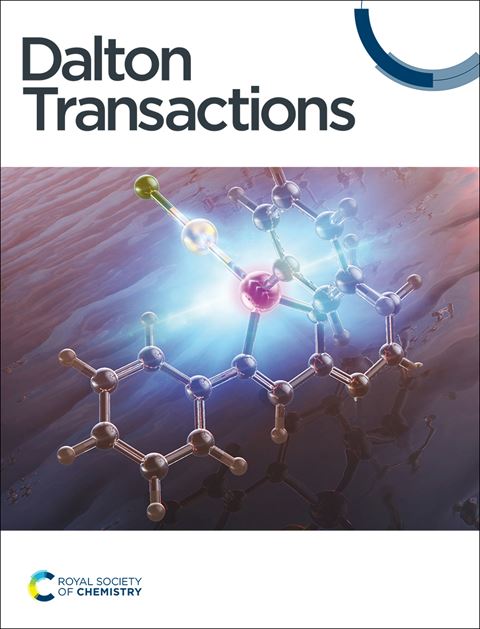Copper(II) complexes with (E)–4–(2–(pyridin–2–ylmethylene)hydrazinyl)quinazoline and non–steroidal anti–inflammatory drugs: Structure and biological evaluation
IF 3.5
3区 化学
Q2 CHEMISTRY, INORGANIC & NUCLEAR
引用次数: 0
Abstract
Four novel Cu(II) mixed−ligands complexes containing the quinazoline (E)−4−(2−((pyridin−2−yl)methylene)hydrazinyl)quinazoline (HL) or its methoxylated derivative (HL1) and a non−steroidal anti−inflammatory drug (mefenamic acid, flufenamic acid, diflunisal or diclofenac) as ligands were synthesized and characterized with single−crystal X−ray crystallography. In these complexes, the quinazolines are as tridentate or bridging tetradentate ligands. The studied biological properties of the complexes included the interaction with calf−thymus DNA, the ability to cleave supercoiled circular pBR322 plasmid DNA in the absence or presence of various irradiation wavelengths, the ability to reduce H2O2 or to scavenge free radicals such as 1,1−diphenyl−picrylhydrazyl and 2,2'−azinobis−(3−ethylbenzothiazoline−6−sulfonic acid), and the affinity for bovine serum albumin. The compounds can bind tightly to calf−thymus DNA via intercalation, and most of them induce notable (photo)cleavage of plasmid DNA. They can also bind tightly and reversibly to the albumin and exhibit moderate−to−significant activity towards 2,2'−azinobis−(3−ethylbenzothiazoline−6−sulfonic acid) radicals and H2O2.求助全文
约1分钟内获得全文
求助全文
来源期刊

Dalton Transactions
化学-无机化学与核化学
CiteScore
6.60
自引率
7.50%
发文量
1832
审稿时长
1.5 months
期刊介绍:
Dalton Transactions is a journal for all areas of inorganic chemistry, which encompasses the organometallic, bioinorganic and materials chemistry of the elements, with applications including synthesis, catalysis, energy conversion/storage, electrical devices and medicine. Dalton Transactions welcomes high-quality, original submissions in all of these areas and more, where the advancement of knowledge in inorganic chemistry is significant.
 求助内容:
求助内容: 应助结果提醒方式:
应助结果提醒方式:


